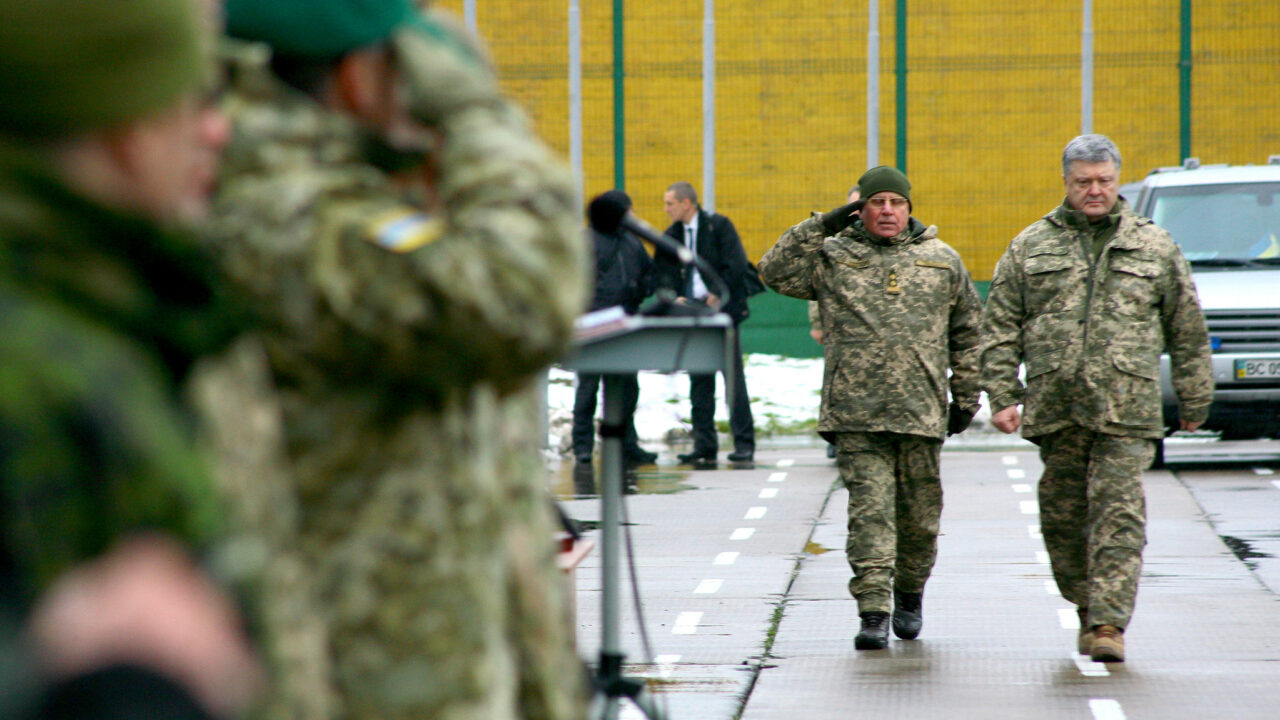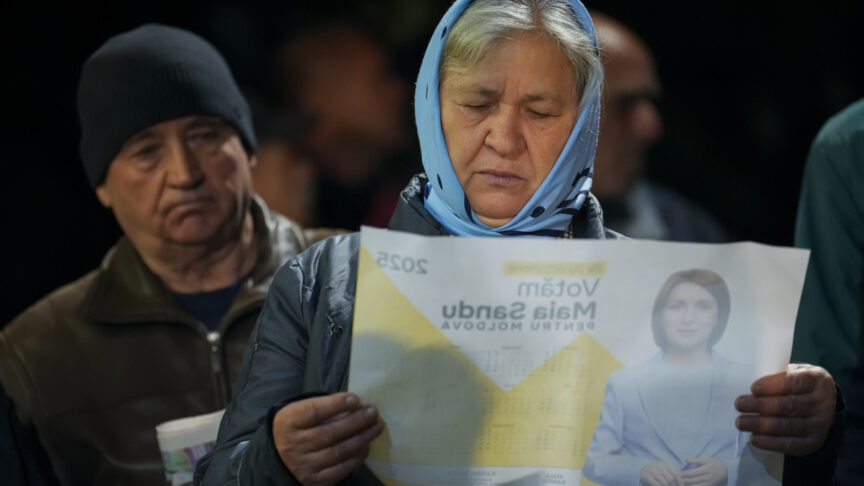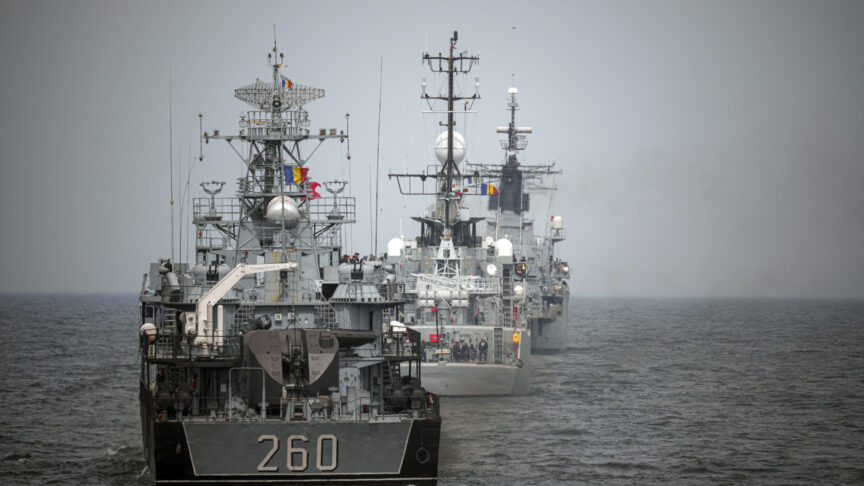War of unreality: Why Russia is threatening to escalate the Ukraine conflict
European governments have yet to learn a key lesson from the war in Ukraine. The alternative reality the Kremlin lives in is becoming increasingly dangerous
Over the past two weeks, Russian military movements and deployments near Ukraine’s border have increasingly caught the attention of the West. In late March, such movements were occurring to Ukraine’s east, north, and south – including through the deployment of some Belarussian troops – but, last week, the centre of gravity of Russia’s military build-up shifted towards the occupied Crimean peninsula and the Krasnodar region, which borders Donbas.
As the situation is still developing, there are varying estimates of the size of Russia’s deployments. But it deployed many of the Southern Military District’s manoeuvre brigades and regiments to the field, each of them deploying at least one battalion tactical group (for a total of over 30). And 16 more have been deployed from other regions across Russia. This roughly correlates with the troop strength the Ukrainian General Staff has indicated. (By comparison, NATO’s rapid response force is intended to be 30 battalions strong.) Because aerial deployments are much harder for civilians to track, there is little publicly available information on the Russian air force’s movements. However, there have been recorded increases in Russian aerial activities in the Baltic region during the time in question, and the Russian Ministry of Defence has stated that all air force and naval aviation units of the Southern Military District will be exercising common operational tasks. There is little doubt that Russia is pulling together an assault force capable of invading Ukraine. But how far will it go?
One element of the Russian military apparatus is notable in its absence: the Rosgvardia (National Guard). In 2014, when Russia was threatening to launch a full-scale invasion of Ukraine, the National Guard’s predecessor formations (then under the Ministry of Interior) deployed in large numbers alongside military units. The idea was that the Kremlin would need the National Guard to set up an occupation regime in Ukraine and to suppress local and irregular resistance to the Russian occupiers. Thus, whatever Russia’ plan may be, it does not currently seem to involve an all-out invasion of Ukraine – by, for example, conquering everything east of the Dnepr, which Russian propaganda outlets refer to as ‘Novorossiya’ (New Russia).
Yet it is plausible, and even likely, that Russia will engage in other forms of limited escalation to alter the stakes of the war in Ukraine. There are several reasons for this. Firstly, escalation could provide Moscow with a pretext to formally deploy ‘peacekeepers’ or upgrade diplomatic ties with the separatist republics it created in eastern Ukraine, thereby altering the terms of the legal dispute over the Donbas war. Even in the case of a limited Russian provocation in Donbas, massive Russian troop deployments to the flanks would tear down Ukrainian reserves guarding the hinterland, preventing Kyiv from reacting with a strong hand.
Secondly, limited escalation around Crimea to capture a small bridgehead on the Ukrainian mainland – an operation formally justified by a lack of water supply on the peninsula but, in practice, designed to increase Kyiv’s military vulnerability – is well within the realm of possibility. The recent deployment of landing craft from the Caspian Sea to the Black Sea creates further suspicion on that front. The recent increase in rampant Russian propaganda against Ukraine may be a rallying call for such an operation.
In any case, Moscow sees efforts to showcase Ukraine’s military vulnerability as inherently valuable in trying to pressure Kyiv into concessions. The Kremlin demands that Kyiv fulfil the Minsk Agreement on its terms – by integrating the proxy republics into Ukraine as they are, thereby providing Russia with a permanent veto on Kyiv’s domestic politics. Since the beginning of the war, Moscow has been unwilling to accept any compromise short of that. But neither Ukraine nor the West ever indicated that they would agree to Moscow’s terms. On the contrary, US President Joe Biden used his first call with his Russian counterpart, Vladimir Putin, to clearly state that Ukraine’s sovereignty is not for sale. Now, Putin seems to be testing whether this will still hold true after he raises the price.
It is plausible, and even likely, that Russia will engage in other forms of limited escalation to alter the stakes of the war in Ukraine.
However, there is a more troubling motivation for current Russian military moves than just cold-blooded brinkmanship. The Kremlin’s accusations that Kyiv is seeking a military solution to the Donbas conflict, and that NATO and the United States are conspiring with Ukraine to retake Crimea, are not only tools of propaganda. Large parts of Moscow’s political establishment – particularly the intelligence services – sincerely believe in these accusations. Hence, they are using the military to pre-empt escalation that, in reality, no one in Kyiv is planning.
Ironically, in 2019, President Volodymyr Zelensky placed additional restraints on the Ukrainian army not to make even minimal gains in Donbas (though it won some minor skirmishes over hilltops for artillery spotters between 2016 and 2018, moving its front line forward by 50 meters here and there). And he was much more forthcoming than his predecessor, Petro Poroshenko, in negotiations over demilitarisation and troop separation – in the hope of reassuring Moscow that Kyiv did not want to challenge the military status quo. For the same reason, Zelensky appointed Andriy Yermak, one of the most pro-Russian figures in his team, as a special envoy for negotiations with Russia. And Zelensky even made Yermak head of the presidential administration, to remove potential obstacles to direct communication between the Kremlin and his office. Zelensky agreed in 2019 to include Volodymyr Tsemakh, a key witness in the MH17 incident, in a prisoner exchange with Moscow, aiming to save Russia some of the humiliation of the Dutch investigation into the case. These steps were highly controversial in Kyiv at the time, but Zelensky thought them necessary.
Ukraine received nothing in return. Zelensky only recently signalled his dissatisfaction with Moscow’s unwillingness to move an inch on these issues, by finally sanctioning Putin’s most trusted ally in Ukraine, Viktor Medvedchuk. Although there is little chance that a pro-Russian figure such as Medvedchuk or Yuriy Boyko could win any nationwide Ukrainian election, the Kremlin still believes that they are a credible political force – one of its many fundamental misreadings of Ukrainian politics. Hence Putin felt deprived of a ‘political option’ for Kyiv that was not there in the first place.
In response to the recent military threats from Moscow, Zelensky has increased his efforts to push for NATO membership and has ruled out any return of physical negotiations in Minsk, because Belarus is no longer neutral in the conflict. (The latter move had been widely expected since August, when Moscow began to tighten its grip on the embattled regime in Minsk following protests against a fraudulent Belarusian presidential election.)
Zelensky was the most conciliatory politician Moscow could have realistically hoped to claim the Ukrainian presidency. Now, Moscow has pushed Zelensky to adopt a similar position to Poroshenko.
European governments have yet to learn the lessons of this confrontation. The alternative reality the Kremlin lives in – built on fantasies such as NATO and Ukraine teaming up to conquer Crimea – is becoming increasingly dangerous. There was no Ukrainian military effort under way that could have justified the operations Russia is now engaged in on Ukraine’s borders. While the Kremlin’s fears are based on illusions, it believes that these illusions entitle it to real offensive actions. The US and the United Kingdom aside, Western countries have been incredibly slow and cautious in their criticism of Russia’s recent behaviour. For the sake of its own security, Europe needs to make clear to Moscow that it will not accept Russian delusions about other states’ intentions as a reason for war. European leaders need to publicly call out Russian accusations against Kyiv and the West as lies, and to use the Organisation for Security and Co-operation in Europe’s full toolkit on confidence-building measures to publicly discredit the Kremlin’s arguments as fiction. Diplomatic constraint, indifference, and equidistance will only embolden the Kremlin to push unreality to new limits, and to act accordingly.
The more vulnerable Russia’s neighbours are, the more effective its military muscle-flexing becomes. But strengthening their ability to defend themselves and to increase the costs of Russian military adventurism is a long-term effort that Europeans cannot launch at short notice – in a crisis in which they suddenly realise that they should have acted much earlier. There are plenty of proposals for how the European Union can strengthen the resilience of its eastern partners. It only needs to act on them.
The European Council on Foreign Relations does not take collective positions. ECFR publications only represent the views of their individual authors.



